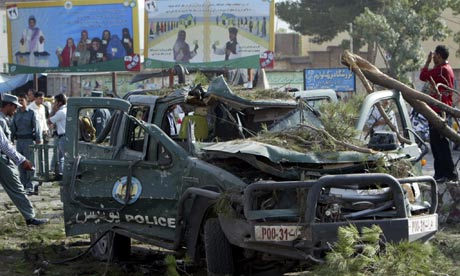Although talks between India’s Nirupama Rao and Pakistan’s Salman Bashir in the last week of June 2011 did not produce a major breakthrough, the fact that these were viewed positively by both the sides and were described as constructive and cordial makes the talks special. This is because nothing more than the reiteration of known positions on the resolution of the Jammu and Kashmir dispute and on the export of terrorism into India had been anticipated in both the countries. The talks focussed on peace and security, including terrorism and nuclear and military confidence bldg measures; the Kashmir issue; and, the promotion of people-to-people contacts as well as friendly exchanges.
During the talks, India sought early closure on the trial of Pakistani terrorists who were involved in the planning and execution of the Mumbai terror strikes in November 2008 and pointed out that there cannot be any meaningful discussion on Kashmir under the shadow of the gun. Calling for an end to the “shadow of the gun and the violence it has unleashed”, Ms Rao expressed concern over continuing infiltration into Kashmir. She said at a joint press conference that the “ideology of military conflict should have no place in the paradigm of our relationship of the 21st century… Instead, this relationship should be characterised by the vocabulary of peace, all-round cooperation in the interest of our people, growing trade and economic interaction, as well as people to people contacts — and, all this, let me emphasise, in an atmosphere free of terror and violence.”
The issue of terrorism figured prominently in the joint statement: “The foreign secretaries noted that both countries recognize that terrorism poses a continuing threat to peace and security and they reiterated the firm and undiluted commitment of the two countries to fight and eliminate this scourge in all its forms and manifestations. They agreed on the need to strengthen cooperation on counter-terrorism.”
Both the sides agreed to make efforts to expand trans-LoC trade, increase the frequency of the Srinagar-Muzzafarabad bus service and to examine the feasibility of starting a bus service between Kargil and Skardu. Frank talks were held on the issue of peace and security between India and Pakistan. Discussions on CBMs included the establishment of contacts between the training establishments of the armed forces of the two countries, including India’s National Defence College and Pakistan’s National Defence University. New nuclear CBMs and measures for better coordination between India’s Coast Guard and Pakistan’s Maritime Security Agency were also discussed. India had presented a draft agreement to prevent “situations at sea” involving vessels of the two countries at a previous meeting. The Pakistani side agreed to examine the document.
A suggestion for contacts between defence and security think tanks, including the holding of seminars and conferences, was also taken up for discussion. Both the sides agreed that hostile propaganda should not be allowed to cloud the relationship. The two countries decided to constitute a group of experts to discuss conventional and nuclear CBMs to “discuss implementation and strengthening of existing arrangements, and to consider additional measures, which are mutually acceptable, to build trust and confidence and promote peace and security.”
Unlike the frosty talks between India’s External Affairs Minister S M Krishna and his Pakistani counterpart Shah Mehmood Qureshi in 2010, the Foreign Secretary talks resulted in some forward movement. Krishna and Pakistan’s new Foreign Minister – to be appointed shortly, will meet in July 2011 and take up these issues where the two Foreign Secretaries have left off. If they succeed in building on the gains made at Islamabad, the India-Pakistan rapprochement process will once again begin to gather momentum.

 This week, the Taleban launched attacks in the northern cities of Herat and Taloqan. Also this week, about 200 Afghan militants crossed into northwestern Pakistan and engaged in a gun battle with Pakistani security forces. Rather than work even more closely with American forces, President Hamid Karzai of Afghanistan issued an ultimatum this week to American Forces and NATO to cease all strikes against Afghan homes. Why?
This week, the Taleban launched attacks in the northern cities of Herat and Taloqan. Also this week, about 200 Afghan militants crossed into northwestern Pakistan and engaged in a gun battle with Pakistani security forces. Rather than work even more closely with American forces, President Hamid Karzai of Afghanistan issued an ultimatum this week to American Forces and NATO to cease all strikes against Afghan homes. Why?